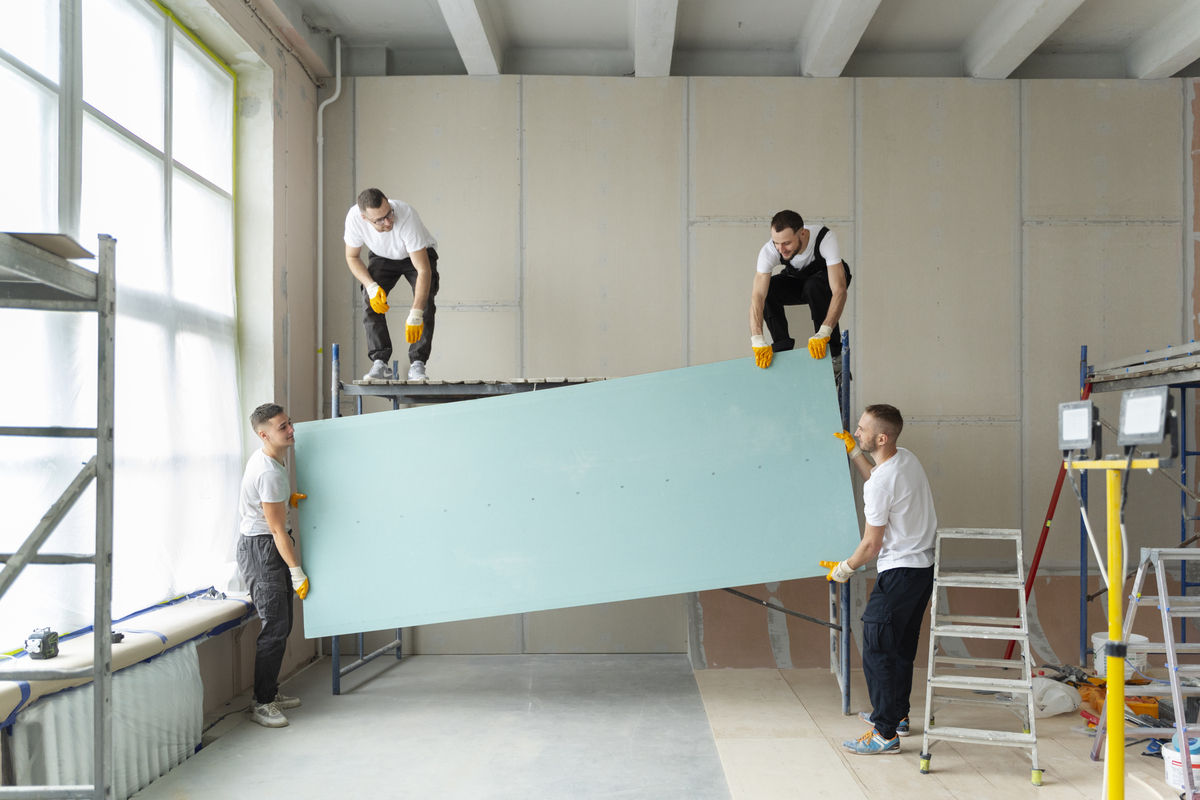Exclusive Neuroject Article: If you’re a building owner, it is important to know that you have the responsibility of preserving its durability and look. Building maintenance is crucial to keeping your property in good shape and ensuring the security of its occupants and guests. Establishing a regular maintenance schedule can help you avoid having to make costly repairs in the future, even though it can be easy to overlook routine maintenance tasks or put them off for another day. Here are seven vital building maintenance hints to keep your building in good working order.
To maintain the peak performance of your client’s assets, building maintenance is required. But it’s not always simple to keep a maintenance workflow running efficiently. You can help automate your process so that your software does labor-intensive work for you with the aid of tools like a cost estimator or a building maintenance software.
The goal is to delve into the world of building maintenance in this article and reveal some crucial advice that can significantly impact the lifespan of your property. Additionally, Let’s examine and contrast various maintenance approaches, highlighting their benefits and drawbacks, so that you can decide how best to take care of your priceless investments. With these priceless insights available to you, you can ensure the durability and functionality of any building.
A journey towards efficient building maintenance can save time and money in the long run while also ensuring a safe and welcoming environment for everyone who steps foot inside, whether it be residential homes or imposing commercial complexes. Let’s delve into the world of building maintenance in this article and offer you helpful advice on how to maintain the beauty of your home, examining various methods and strategies using a series of comparative sentences to help you decide on the best maintenance procedures.
Table of Contents
What is Building Maintenance?
Keeping the building comfortable for all users is the goal of building maintenance. This involves constant care – routine maintenance – but also preventive maintenance to preserve the equipment and structures. Then, when it is no longer possible to provide the same level of comfort, it gives way to building refurbishments.
Building maintenance is defined in the construction and field service industries as the assortment of tasks carried out to lessen the likelihood of unanticipated breakdowns. These tasks will help increase productivity and asset functionality, as well as maintaining compliance with safety and warranty requirements.
Depending on the specific company or organization, maintenance can involve a wide range of activities. It includes a lot of “behind the scenes” work to maintain a building’s or facility’s functionality and occupants’ comfort.
Cleaning up common areas, taking out the trash on a regular basis, and fixing broken things are all part of building maintenance. Electrical systems, heating and cooling systems, and other utility services may need to be inspected, fixed, and maintained.
In some cases, building maintenance also covers the exterior of the building, taking care of the sprinkler system, the lawn, and the landscaping.

The Benefits of Building Maintenance for Your Company
Building maintenance is crucial for those in the field services sector to ensure longevity and low repair costs. You must make sure that you have a working schedule for repairs and maintenance as part of your duties to your client. The benefits of building maintenance have been listed:
- Maintaining a well-maintained building adds value to a property, attracts potential buyers, and increases business. Investing in preventative maintenance ensures safety and energy efficiency.
- Maintaining your building effectively reduces energy costs by minimizing air infiltration, improving insulation, and ensuring the proper functioning of equipment and appliances.
- Major equipment and asset failures can be avoided with proper building maintenance.
- By performing preventive maintenance, you can identify any flaws before they become major problems.
- Regular maintenance also increases your trust in the reliability and security of your work.
Without routine maintenance, a building or job site will be more susceptible to dangers, risks, and emergency breakdowns that could cause serious injuries or nullify Service Level Agreements (SLA).
The Essential Handbook of Building Maintenance: Techniques and Advice
A building needs to be maintained to ensure its longevity, safety, and functionality besides its aesthetic appeal. Proactive planning, regular inspections, and prompt repairs are all essential components of effective maintenance. In this thorough guide, Let’s get into the vital advice and methods that landlords, managers, and tenants can use to keep their properties in excellent condition.
Owning a commercial property requires regular maintenance to preserve its value and generate revenue. Regular maintenance prevents costly renovations and ensures the building’s condition. The primary objectives are to maintain the building’s value and attract high-quality tenants. Neglecting maintenance can lead to a decrease in value. Regular maintenance also prevents unforeseen costs, such as roof collapse, fire damage, pest infestation, or flooding, which can negatively impact profits.
In this thorough guide, Let’s get into the vital advice and methods that landlords, managers, and tenants can use to keep their properties in excellent condition.
1. The Value of Continual Property Inspections
Owning a property is an expensive investment, and it takes careful attention to detail to make it successful. The significance of routine property inspections is an essential factor that is frequently disregarded. These inspections are an effective tool for preserving the worth, reliability, and profitability of your property. This article will discuss the value of routine property inspections in ensuring the longevity and success of your investment.
A Variety of Inspections
- Before a New Tenant Moves In: Prior to accepting a new tenant, a thorough inspection of the property is essential to confirm its current state of cleanliness and condition and to avoid disagreements over security deposits at the end of the tenant.
- During the Tenancy: Throughout a tenant’s tenancy, routine inspections determine the property’s condition and guarantee that tenants adhere to the rules. These yearly or semi-yearly inspections assist landlords in identifying and resolving maintenance issues, fostering open communication with tenants, and handling any issues or repairs.
- Keep Your Property’s Value High: For protecting investment value, routine property inspections are essential. They assist in quickly identifying and resolving maintenance issues, preventing them from developing into bigger issues. They reduce the need for expensive repairs or renovations, thanks to this proactive approach. Routine inspections assist property owners in keeping up with necessary maintenance tasks, which enhances the property’s appeal and value. This may draw reputable tenants and lead to a rise in rental prices.
- Help Landlords and Tenants Communicate: By giving tenants a chance to voice their concerns regarding maintenance, repairs, or other issues with the property, routine property inspections help to foster a positive landlord-tenant relationship. This proactive approach fosters partnership, fosters open communication, and builds trust, all of which helps to increase tenant satisfaction and retention. It lessens the possibility of misunderstandings or conflicts.
In the dynamic world of real estate ownership, they reveal routine inspections as a cornerstone of success.
Regular inspections are a priority for property owners because they help maintain property value, identify, and quickly address problems, and ensure that tenants follow the rules. These examinations protect financial investments and aid in the general increase in the value of rental properties.

2. Building Preventive Maintenance
Regular inspections and repairs of vital assets are part of the proactive approach to building maintenance known as preventive maintenance. It aims to increase equipment longevity and prevent failure, minimizing downtime and cutting costs. Predictive maintenance is based on the state of a system or component and involves routine inspections to foretell equipment failure. Both approaches aim to keep equipment from breaking down.
Building safety must include preventive maintenance to avoid expensive repairs and extend the life of essential assets. It entails repeated inspections, much like a doctor keeping tabs on a patient’s wellbeing. Excessive building maintenance can cause critical assets to lose their functionality and can be expensive up front. Preventive maintenance includes keeping HVAC and fire alarm systems in good working order to stop the spread of the legionnaires’ disease.
Preventive Maintenance Types
- Routine Maintenance: It includes routine machine servicing, cleaning, and inspections (weekly, monthly, annually, etc.). This tactic typically entails simple tasks like filter changes.
- Proactive Substitutions: To avoid component failure, it causes replacing worn, broken, or non-operational building elements. These replacements do away with the high costs and unplanned downtime associated with breakdowns.
- Scheduled Renovations: This typically happens in colleges, schools, and other places with cyclical usage. Utility companies and facilities that use continuous processes may also experience this. All known faulty and deteriorated components are fixed or replaced during a planned shutdown (i.e., a break between college semesters).
- Condition Monitoring: By utilizing sensors on machinery to enable real-time results to be fed into preventive maintenance software, this goes beyond predictive building maintenance. Servicing is done as needed depending on the state of the component, much like predictive maintenance.
To ensure their continued use and secure operating conditions, commercial buildings all need some sort of building maintenance. When carried out properly, proactive maintenance techniques like preventive maintenance can extend equipment service life and avoid failure. In contrast to reactive building maintenance, which is frequently connected to unplanned downtime and high repair or replacement costs, proactive maintenance (PM) strategies encourage a reduction in overall building maintenance costs.
Most commercial buildings share critical elements like plumbing, electrical, and mechanical equipment often. However, specific building types require special building maintenance considerations. Some PM programs employ a team of full- or part-time employees who maintain. In other programs, the inspection component of the building maintenance program is handled by hiring a commercial property inspector.
3. Make a Maintenance Department more Energy Efficient
All industries, including those that use a lot of energy, depend on machines that are directly controlled and managed by the maintenance department. The building maintenance teams are also in charge of controlling the indoor comfort of large commercial structures and apartment complexes. The maintenance departments should acknowledge operations as the cornerstone of any energy efficiency drive, since increasing energy efficiency is a major global concern. Learn the 5 ways to improve the energy efficiency of your maintenance department.
The International Energy Agency (IEA) reports that, since 2015, improvements in the world’s energy intensity have slowed. The agency added that the rise in the share of energy-intensive industries in industrial production in nations like China and the United States was driving up energy demand. Once more, the USA saw higher levels of energy demand for heating and cooling buildings.
It’s seen now how building maintenance practices are crucial to energy efficiency based on the findings. We’ll go over ways a maintenance department can save energy in the sections below. The aim is to cut back on both energy use and the amount of money spent on energy bills.
- Get Maintenance Staff Buy-In: Informing maintenance staff about the significance and advantages of these practices will encourage them to adopt them. The team needs to be convinced of how their actions affect the company. Depending on the work culture, implementing energy-saving concepts may cause either minor or significant changes to existing practices. Presenting this change in a positive light and emphasizing how money saved from the energy budget can be used for other needs that benefit the company’s workers is essential.
- Use Energy Tracking Tools: An organization should empower its maintenance department with tools to identify energy-draining sources. Digitalization can modernize energy efficiency by allowing building maintenance staff to track and manage energy consumption using data-backed information. Tools like non-intrusive energy auditing can help identify gaps and optimize energy consumption in facilities. This approach, as highlighted by the IEA report, can help organizations modernize their energy efficiency and improve overall performance.
- Increase Your Use of Energy-Efficient Resources: Organizations can invest in energy-efficient resources for their maintenance departments, such as Energy Star certified power tools and work equipment. This shows seriousness in management and helps create a more energy-efficient maintenance culture. Adopting a policy of using energy-saving spare parts and inventory, such as keeping 80% of spare light bulbs as LED, can also help. LED lighting produces light 90% more efficient than incandescent bulbs.
- Using the Concepts of Lean Management: Lean management employs strategies that increase energy efficiency to reduce waste in building maintenance units. Just-in-time ordering is one instance of how to reduce stock and inventory without affecting workflow. They decrease storage needs and space requirements. They decrease storage needs and space requirements as a result. Another illustration is using HVAC and lighting systems less frequently, which can save money on energy costs and lessen the carbon footprint of the building. Building maintenance departments can cut their carbon footprint and save thousands of dollars each year by implementing lean principles. Lean maintenance techniques can significantly increase output and energy efficiency.
As it’s seen, any buildings maintenance division should take the lead in energy management. And given the technology that is currently available and the many opportunities for improvement that exist, making maintenance more energy-efficient doesn’t need to be difficult.
The dedication of all parties to kick off and complete the process matters most.
4. Communication Drives Better Maintenance and Facilities Management
Anyone who works in operations and maintenance has heard something similar. They exchanged the accusations back and forth along with other clichés, like “equipment is always down” and “It’s not clear if they have restored service.”
It’s all a result of poor communication. Relationships are said to be based on communication so far, there hasn’t been an instance where this is not true. The peculiarity of maintenance and facility management is the lack of a consistent information flow. The relationship between customers and service providers comes first, followed by that between managers and technicians, and finally between managers and suppliers.
Types of Communication in Facilities Management
- Management of Clients & Communication: Effective communication is crucial for increasing transparency and improving client management, which can significantly impact a business. Combining efficient communication with the best technology makes it easier to manage expectations, show compliance, and gain client trust. Clients value not only rational factors but also emotional ones, such as ease of doing business, individual values, and inspirational values. Poor communication can compromise working relationships and lead to customer loyalty, as other elements of value are often tied breakers. Therefore, it’s essential to prioritize effective communication in business.
- Communication & Retention of Employees: Effective communication is crucial for team spirit and employee retention. Employees need to feel appreciated and understand managerial decisions to avoid disengagement and higher quit rates. Poor communication can lead to employees accusing managers of not recognizing strengths, withholding information, micromanaging, failing to listen, and not having their backs. Regular meetings can increase engagement. However, over-communication can lead to employee quits and frustration for busy suppliers. During lockdown, employees craved workdays without video calls, emails, and notifications, highlighting the importance of purposeful communication.
- Supplier Relationships & Communication: It’s essential to communicate clearly if you want to develop enduring relationships with your suppliers. Gaining their support requires mutual respect, besides an understanding of their planning and work. Transparency in project intentions and goals when subcontracting promotes trust and problem-solving. Be reasonable when ordering parts in terms of lead times, deliveries, costs, and specifications. For a successful relationship, you must treat your suppliers the same way you want your clients to treat you. You can ensure a successful and productive business relationship by doing this.
- Enhanced Record Accessibility: To improve response and recovery times, consider storing all data online, including technical sheets and equipment records. This will allow managers and technicians to access the necessary information quickly and efficiently. Having the equipment’s work history at hand can reduce the time needed for problem diagnosis. To maximize the benefits of having all data in one place, it is essential to access these records through a mobile device, as this increases the accessibility of maintenance records.
Although maintenance managers and technicians must collaborate closely, issues can arise and put a barrier between the two groups.
These suggestions are meant to assist you in avoiding it through effective communication and rapid information flow.

Example of Building Maintenance
A facility’s systems, repairs, and ongoing maintenance are all handled by a building maintenance department. Most of the maintenance team’s work is frequently taken for granted by other workers at the company. Put, they expect it will keep the structure tidy, that snow will be cleared away in the winter, and that air conditioning will be turned on in the summer. Here are some examples to assist you in getting more of a clear picture in your head.
Day-to-Day Repairs: Maintenance services involve regular repairs to buildings’ services, such as water supply and plumbing, to ensure the continuous functioning of various services, such as replacing blown fuses, repairing faulty switches, and performing lawn mowing and hedge cutting.
Annual Repairs: Maintenance repairs, such as whitewashing, distempering, cleaning lines, painting, and tank cleaning, are performed by maintenance technicians to maintain the aesthetics and lifespan of buildings and services.
Special Repairs: Building repairs are necessary to replace deteriorating parts and services in aging facilities, aiming to prevent structural and functional deterioration and restore them to their original condition as much as possible.
Additions and Alterations: Buildings undergo additions and alterations to meet occupants’ unique needs for functional efficiency, with maintenance workers updating facilities as necessary.
How do You Pick the Best Contractor?
Choosing the right building maintenance contractor is crucial for property owners and managers. A good contractor can provide high-quality service, minimize disruption to tenants or occupants, and save money. To choose a contractor, consider your needs and choose one who can handle most or all of them. Some contractors offer a range of services, while others specialize in specific areas. Choosing a contractor who can provide multiple services can lead to better deals.
Check their credentials to ensure they have the licenses, permits, and insurance to operate in your area. This protects you from liability in case of accidents or injuries during maintenance work. Verify their good reputation by checking references, reviews, and testimonials from previous clients. You can also ask for case studies or reach out to other building owners or managers who have worked with the contractor before.
It is essential to request a comprehensive quote and contract from the contractor, including all necessary services and potential additional costs, to ensure a fair price for maintenance. Get several quotes to get a fair price, but don’t just go with the cheapest one without looking at the contractor’s credentials and experience.
Select a responsive contractor who has a team on call around the clock to handle emergencies, especially for structures that need constant maintenance. Consistency and quality in the building maintenance services depend on a long-term partnership with the contractor. By doing this, you will avoid having to look for a contractor regularly. You can choose the best contractor for your building and guarantee that it will be in excellent condition for years to come by using the advice in this article.
Conclusion
In the end, maintaining a building entails more than just fixing things when they malfunction; it also involves being proactive to ensure the durability and functionality of the building. In this article, we’ve looked at several methods and strategies that can guide property managers and homeowners towards selecting the best maintenance practices.
Building maintenance is crucial for property value, safety, and energy efficiency. Regular inspections and energy tracking tools can help reduce costs and increase trust in the reliability of work. The International Energy Agency (IEA) reports that energy intensity has slowed since 2015, with the rise of energy-intensive industries in China and the US driving increased demand. To improve energy efficiency, organizations should get maintenance staff buy-in, use energy-efficient resources, and implement lean management concepts. Investing in energy-efficient resources and adopting a policy of using energy-saving spare parts and inventory can also contribute to a more energy-efficient maintenance culture. Effective communication is essential for better maintenance and facilities management, as it helps build trust and reduces waste.
Building maintenance is crucial for a facility’s systems, repairs, and ongoing maintenance. Choosing the right contractor is essential for quality service, minimizing disruption, and saving money. Check credentials, and reputation, and request a comprehensive quote. Select a responsive contractor with a 24/7 team for constant maintenance and a long-term partnership for consistent and quality services. So, remember these suggestions and make wise choices to implement the best building maintenance procedures for your property.
Suggested article to read: How to Detect Water Leakage in Building
Resources:
field insight | mccaw property management | ccpia | dexma | infraspeak | architect | upkeep
For all the pictures: freepik





